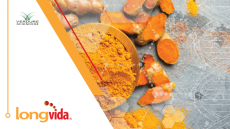Progress or a giant nothingburger? Trade associations react to FDA NDI guidance announcement

As previously reported, the Food and Drug Administration (FDA) published the finalized Section V (“NDI Notification Procedures and Timeframes”) of the NDI guidance on March 5, which focuses on frequently asked questions about the NDIN submission and review process.
The Council for Responsible Nutrition (CRN) expressed its view that the announcement reflects a degree of progress toward gaining clarity on FDA's expectations for these NDI notification, noting that it has been nearly eight years since the Agency published the last draft guidance.
"Throughout our communications, CRN has consistently advocated for a more collaborative approach with the FDA to develop changes to the NDI notification process, suggesting that the industry could serve as a valuable resource in decision-making," CRN told NutraIngredients-USA. "We will be examining this Guidance with our Regulatory Affairs Committee and responding to FDA as appropriate."
Michael McGuffin, president of the American Herbal Products Association (AHPA), said his organization was pleased to see the finalized section.
"This action is consistent with a suggestion AHPA made during an in-person meeting at FDA’s office in 2012, specifically suggesting that FDA address the issue of NDIN guidance with a section-by-section based approach," he said. "We were told by FDA leadership at that time that such an approach would 'be confusing'. However, the final guidance issued today—though still subject to detailed internal and member review—appears to be clarifying rather than confusing.
"We look forward to FDA’s issuance of additional clarifying sections of guidance on this important regulatory matter."
NPA: A giant nothingburger
Meanwhile, Dr. Daniel Fabricant, president and CEO of the Natural Products Association (NPA), was not impressed.
"After eight years, this is really disappointing," he told us. "NDIs are a key pillar of DSHEA, and FDA is not taking it seriously."
He added that the NDI process is critical for consumer safety, industry innovation and the regulatory regime but said that the new guidance misses the mark on all counts.
"It is a giant nothingburger that could very well weaken the great value of the NDI process because it leaves so many questions unanswered," he said. “Once again, the agency has chosen to kick the can down the road on the decisions that are most important to consumers and to the market.
"In the face of this inaction, NPA will continue to ask the FDA to develop a tangible plan for domestic enforcement of NDI guidelines. Too many companies are going to market without submitting a NDI notification for their ingredient because another firm has done the hard work, covered the costs and submitted a notification, of which a large portion is public. This 'piggybacking' is unacceptable and does not allow the agency the opportunity to review their manufacturing processes or product specifications. This should raise bright red safety flags."
CHPA: Ingredients and products?
Dr. Duffy MacKay, senior vice president of dietary supplements at the Consumer Healthcare Products Association (CHPA), said that while his association is pleased to see progress being made on the NDI issue under the leadership of Dr. Cara Welch, specifically for addressing procedures and timeframes, CHPA remains concerned "that the final guidance issued today unequivocally asserts that extensive scientific information will be required for every individual dietary supplement product on the market containing a NDI even if the NDI has already met safety requirements established by the FDCA".
“In CHPA’s comments to FDA on its draft guidance, we urged the Agency to confirm an ingredient-focused approach to the NDI notification requirement rather than the finished product-focused approach suggested in the 2016 NDI draft guidance,” he said.
He added that Section III.E. of FDA’s Final Guidance highlights the Agency’s persistent emphasis on the disparity between the limited number of NDINs filed versus the abundance of products on the market.
"FDA is essentially doubling down on this point in preemptively establishing a framework, originally proposed in a 2022 draft guidance, that grants an enforcement discretion amnesty window for companies marketing finished supplement products containing a NDI that was not filed with FDA," he said.
Amnesty
The Agency claims to have received only about 1,200 NDI notifications since the passage of DSHEA, but that represents only a fraction of the total NDIs launched on the market over that time. FDA estimates that more than 4,600 notifications should have been submitted and were not.
In a six-page draft guidance released in 2022, FDA proposed granting an amnesty period of sorts to allow the missing notifications to be filed without fear of having products that are technically adulterated pulled from the market.
History
First issued in 2011, the initial NDI draft guidance was met with significant industry backlash, which led to the Agency to go back to the drawing board. Five years later, it issued a revised draft guidance. That revised version was described as “more positive than negative” by CRN’s Mister following the release, but some stakeholders still voiced concerns that the Agency’s approach would dampen innovation.
Since that time, the Agency has adopted more of a piecemeal approach to the NDIN guidance, stating that it is working “expeditiously” to finalize sections as and where it can.
While the new guidance finalizes Section V, in addition to several related questions from other sections of the draft guidance, the FDA has not shared details about when sections of the NDI draft guidance will finalized, particularly with regard to controversial topics like synthetic botanicals and master files.
A FDA spokesperson told NutraIngredients-USA that the Agency does not have an anticipated timeline for the guidances referenced above (synthetic botanicals and master files) but said that it is "prioritizing finalization of additional sections as the Agency completes its review and analysis in light of competing priorities."
















